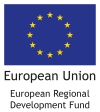Waterchain - prevention of nutrients inflows in the Baltic Sea
Project Waterchain tackled the prevention of water pollution by using spatial planning and source-specific cost-effective technological solutions for water treatment including both science-based ones as well as practical knowledge. The cross-border co-operation partnership set up in the framework of Waterchain project, enabled by the wide complementary expertise of Finnish (incl. Åland), Estonian, Latvian and Swedish partners within the fields of water treatment led to the successful development and implementation of several practical innovative actions to prevent and reduce nutrients and hazardous substances inflows into the Baltic Sea. The project, focused on the main local problems and considered the feedbacks of the local target groups.
The technological methods used to reduce the inflow of nutrients and hazardous substances from inland waters were implemented during the project in participating countries as pilot investments. Crucial hotspot areas for nutrient loading were identified in pilot watersheds. Reduction activities were carried out in hotspot areas by installing and implementing a small scale innovative nutrient reduction systems on the nutrients sources as pilot measures: 4 pilots in Finland and 2 in Latvia. The seventh pilot was carried out in a laboratory.
In addition, the project identified three groups of hazardous substances based on Environmental Quality Standards (EQS) Directive 39/2013/EU and Baltic Sea Action Plan: pharmaceutical residues, pesticides and perfluorinated compounds. Activities to reduce the inflows into the watershed were initiated with a pilot in Swedish and Estonian pilot watersheds.
- 3 groups of hazardous substances identified
- 7 pilots watersheds


